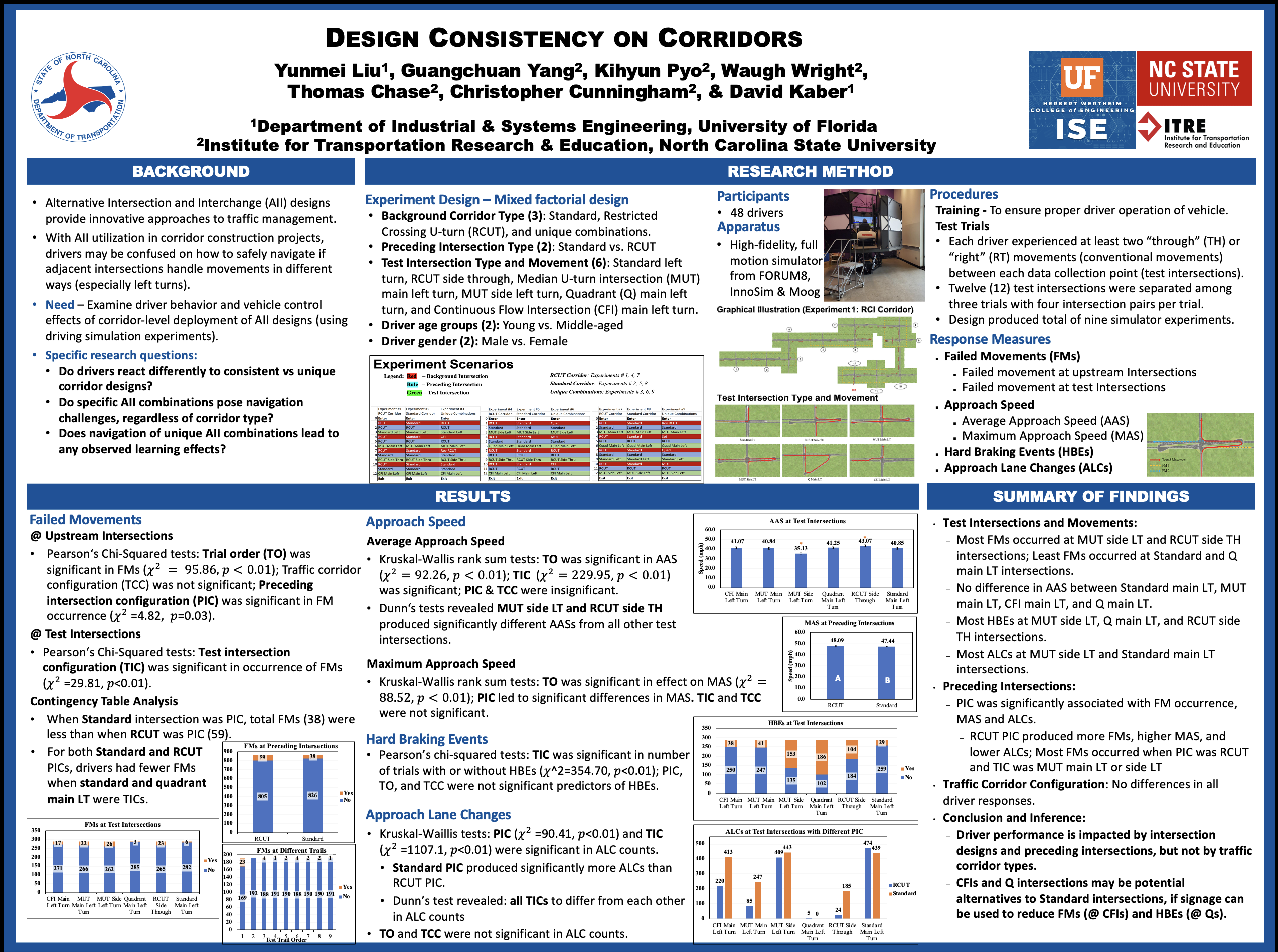5. Other Projects
In addition to the above research studies, I have also been involved in other projects on systems safety analysis research, unmanned aerial vehicle interface design,consistency in the design of interchanges in high-density traffic corridors and non-safety-related in-vehicle and on-road message displays.
5.1 Systems safety analysis research
Fault Tree Analysis (FTA) has realized substantial application for safety engineering; however, the method is not without limitations in comparison to other safety analysis techniques. Traditional FTA requires substantial time and effort even for single fault assessment including determining probability of occurrence. A constrained literature review and examination of functions available in commercial-off-the-shelf FTA software revealed current implementations to lack a structured functional approach to account for the severity of intermediate events to a fault as well as the severity of fault outcomes. To address this specific limitation, a novel Consequence Severity-Probability Importance Measure (CSPIM) is proposed for extension of static FTA. An algorithm is presented to achieve the CSPIM within FTA. In addition, we present a case study to make comparison of traditional FTA with the use of CSPIM within FTA. Results demonstrated that CSPIM effectively integrates a severity analysis feature in FTA and allows for risky events to be prioritized for safety controls, based on the measure.
Related papers
[1]. Kaber, D. B., Liu, Y. & Lau, M. Y. (in processing). Considering Severity of Safety-Critical System Outcomes in Risk Analysis: An Extension of Fault-Tree Analysis. In J-C. Le Coze & S. Antonsen, SpringerBriefs in Safety Management - Safety in a Digital Age: Old and New Problems. Cham, Switzerland: Springer.
[3]. Lau, M., Liu, Y. & Kaber, D. B. (in review). A consequence severity-probability importance measure for fault tree analysis. Submitted to IEEE Transactions on Reliability Engineering (9/24/21).
5.2 Unmanned aerial vehicle interface design
Unmanned Aerial Vehicles (UAV) control interfaces is critical channel to transfer information from a vehicle to an operator. Existing research has heavily focused on increasing levels of vehicle automation but overlooked usable interface design as a method for system performance enhancement. This study investigated operator cognitive workload associated with different UAV interface design alternatives. Three control interface variations were generated and classified as “baseline”, “enhanced” usability and “degraded” usability. Physiological and subjective responses were collected as bases for workload response assessment under different task load conditions. Results on multiple response measures indicated that the “enhanced” interface produced the lowest operator workload and was robust to increased control task demands, as compared with the “baseline” and “degraded” interfaces. This research provides actionable guidelines for UAV control interface design. The approaches used in the study can be applied to interface evaluation for various types of UAVs, as well as other unmanned systems, towards improving human-automation interaction.
Related papers
[4]. Zhang, W., Liu, Y. & Kaber, D.B. (in revision). Effect of interface design on cognitive workload in unmanned aerial vehicle control. Second revision submitted to Int. J. of Human Computer Studies (4/12/21).
5.3 Consistency in the design of interchanges in high-density traffic corridors
This study addressed potential for driver errors in route selection when confronted with variations in interchange design in single roadway corridor as well as driver learning, adaptive and avoidance behaviors.
This study assessed effects of message content and format on driver visual behavior and vehicle control.
[5]. Design consistency on corridors. NC DOT 4th Annual Research & Innovation Summit (March 2023), Raleigh, NC.</a>
 </p>
</font>
#### Related papers
[8]. Liu, Y., Yang, G., Pyo, K., Cunningham, C., Chase, T., Kaber, D. B.. Design consistency. Target journal: Applied Ergonomics.
### 5.4 Non-safety-related in-vehicle and on-road message displays
</p>
</font>
#### Related papers
[8]. Liu, Y., Yang, G., Pyo, K., Cunningham, C., Chase, T., Kaber, D. B.. Design consistency. Target journal: Applied Ergonomics.
### 5.4 Non-safety-related in-vehicle and on-road message displays
Picture below displays of on-road signage (left panels) and invehicle display (right panels) for higher information load (upper panels) and lower information load (lower panels) conditions [C5].
 #### Related papers
[C5]. Cauffman, S.J., Deng, Y., Liu, Y., Cunningham, C., Kaber, D. B. and Feng, J. Driver logo sign detection and hazard responses during partially automated driving. Proceedings of the Human Factors and Ergonomics Society Annual Meeting. 2020; 64(1):1960-1964.
#### Related papers
[C5]. Cauffman, S.J., Deng, Y., Liu, Y., Cunningham, C., Kaber, D. B. and Feng, J. Driver logo sign detection and hazard responses during partially automated driving. Proceedings of the Human Factors and Ergonomics Society Annual Meeting. 2020; 64(1):1960-1964.